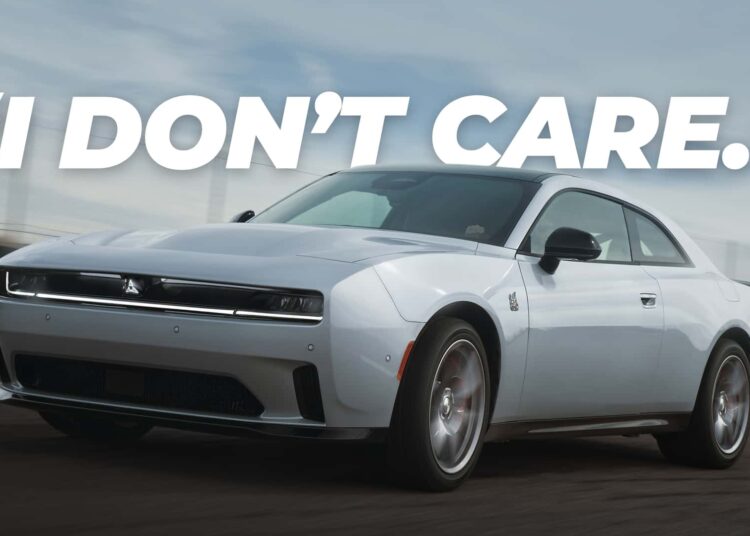The Dodge Charger goes electric with the new Daytona model, but it is still unashamedly a muscle car. At a preview event for the Charger Daytona, Dodge head Tim Kuniskis told gathered media “I don’t care. This is about performance,” when asked about range and efficiency.
“Muscle car owners don’t care about fuel economy,” he added. That said, the EPA range figures for the Charger Daytona are solid. The Charger Daytona R/T promises a 317-mile range from its 100.5-kWh gross (93.4-kWh net) battery pack, while the more powerful Scat Pack should do 260 miles on a full charge. Your milage may obviously vary – especially if you take advantage of the Daytona’s donut mode – but that’s an average figure of 3.4 miles/kWh for the R/T and 2.78 mi/kWh for the Scat Pack. Not bad for vehicles that weigh 5,838 pounds and offer 496 and 670 horsepower, respectively.
| Charger Daytona EV | R/T | Scat Pack |
| Range | 317 Miles | 260 Miles |
| Efficiency | 3.4 mi/kWh | 2.78 mi/kWh |
| Maximum Charge Rate | 183 Kilowatts | 183 Kilowatts |
| Horsepower | 456 HP / 496 HP (Power Shot) | 630 HP / 670 HP (Power Shot) |
| Torque | 404 LB-FT | 627 LB-FT |
| 0-60 MPH Time | 4.7 Seconds | 3.3 Seconds |
| Quarter-Mile Time | 13.1 Seconds | 11.5 Seconds |
Charging rate is impressive too. The Charger Daytona uses a 400-volt electrical architecture, which usually translates to a maximum charging rate of 150 kW, but it seems like it uses the trick of virtually splitting the battery pack into two virtual units charging in parallel, boosting speeds. The maximum rate of 183 kW is achievable at 350-kW stations.
So maybe Dodge didn’t care about range or efficiency, but accidentally made an efficient car with a respectable range. All the more impressive given the power, size, and huge weight of the thing.
But we have to agree with Kuniskis here. We doubt muscle-car buyers will care.
Additional reporting by Christopher Smith.
Read the full article here


























